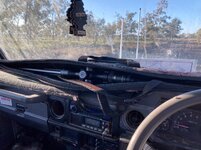Form, on the basis of physics, help me understand why when a manufacturer says they are "shock tested to 1000 or 1500g forces" that doesn't seem to translate to being able to withstand any sort of drop impact. Surely a simple 3 foot drop on a padded mat doesn't cause 1500 g forces, yet the scopes fail predictably fail a drop test. If we remove the marketing of the G forces claims, what the hell do they even mean?
Not an engineer. So this is what I understand from speaking with people, and from seeing it and thinking about it.
Usually the “1,500 G’s” is just rearward moment. Sometimes the test forward and rearward movement. In any case, none of them to my knowledge are checking the position of the reticle after each movement to determine if it is still “zeroed”. The general thing is they are put in a machine that simulates 375 H&H recoil for instance for 1,000 times, then pull they scope out look, through it making sure the lenses didn’t break, and maybe spinning the turrets and checking that they still work. Then in “testing” they may put it in a rifle and zero it in. What they are basically doing is seeing if the scope just falls apart- not seeing if they hold zero through that. They ARE NOT checking position of the reticle in relation to a target, nor are they receiving forces of a drop.
Another instance is in the Tanget Theta thread, Tk421 posted videos of “The Shaker” test that TT did on their scopes. Like the recoil testers, it looks really impressive. But think about it- how does that simulate anything that happens with a rifle scope? And, they’re hot checckinh whether the erector/reticle is staying in the same position through that shaking.
What none of these “G forces tests”, shaking tests, recoil tests, etc do- is measure and check that the position of the reticle has not changed in relation to the rifle/aiming point; nor do they account for the fact that the rings attach to the tube, nor that with the scope being attached to the rifle by rings in the middle- the end LW’s of the scope (eyepiece and objective) are now floating and will take nearly all the impact of the drop with the middle functionally being locked in place.
Checking whether vibration or shaking will rattle a scope apart, is not the same as checking its ability to hold zero when mounted to a rifle and dropped. It also does not tell you whether a scope will hold zero on a rifle from actually shooting it. If you want to know whether a scope holds zero from firing, you have to mount it in a rifle, zero it, and shoot it for thousands of rounds and check zero constantly. If you want to know whether a scope will hold zero from a drop- you have to mount it to a rifle, zero it and drop it, then check that it held zero.
There’s a reason that Trijicon has started advertising that at least some of their scope designs (hint) are zeroed and shot for 1,000/3,000/5,000 rounds and checked for zero, as well as zeroed on a rifle and dropped to check zero retention- because that is the only way to know.

